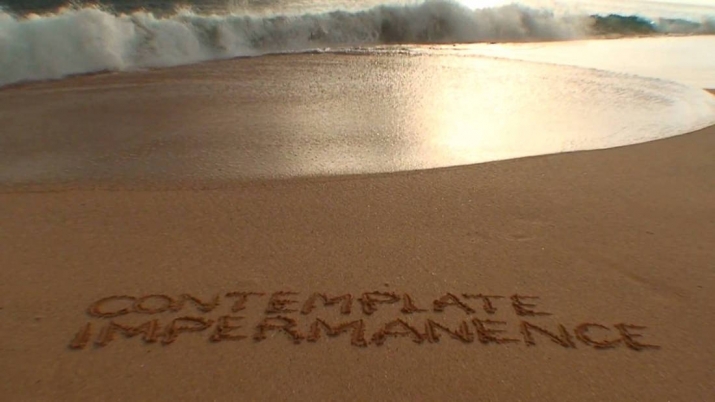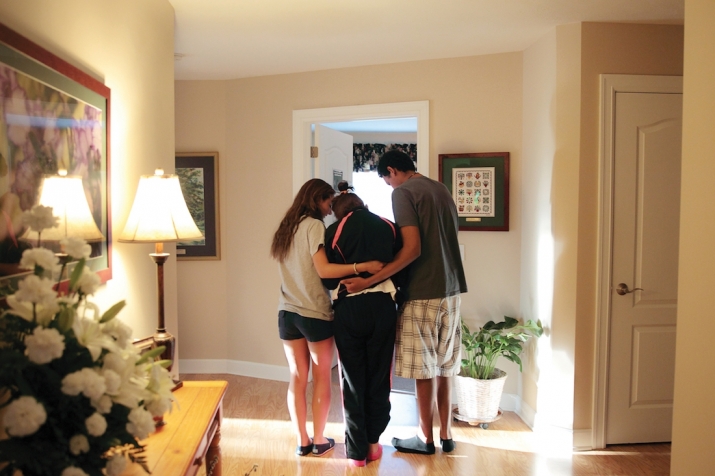FEATURES|THEMES|Commentary
Buddhistdoor View—Breaking the Death Taboo
 From youtube.com
From youtube.comDasho Karma Ura is the president of the Centre for Bhutan Studies and Gross National Happiness (GNH) Research. This think tank is not merely a cloistered university institution; it advises the Bhutanese government on public policy with a view to resolving social problems. On a recent visit to Bhutan’s capital, Thimphu, American author Eric Weiner, who has written extensively on the pursuit of happiness and spirituality in general, “found himself sitting across” from Karma Ura and sharing with him the story of a mysterious panic attack Weiner had recently experienced, despite his impression that life was generally going well. Karma Ura’s advice: to think about death for five minutes every day. (BBC)
So how might Karma Ura’s advice help Weiner, and prevent his panic attacks from recurring? Bhutan is primarily a Buddhist country: according to the Washington, DC-based Pew Research Center, in 2010, 74.9 per cent of the population identified as Buddhist. In Buddhism, meditation on death is a common practice: believing in reincarnation (at least traditionally), we are taught to cherish this human life and use it well, in the knowledge that in the next life our experience will likely be very different. But assuming that Weiner was not a practicing Buddhist, why would Karma Ura have offered this advice? Indeed, “But why would I want to think about something so depressing?” was Weiner’s reply.
In fact, the answer lies therein.
For most of us, death is something we greatly fear—probably more so than anything else. In the West, talking about death is traditionally taboo, and even the idea of thinking about it can appear off-putting. If we do contemplate it without aversion, however, we will soon realize that death is the only certainty in life. Karma Ura attributed Weiner’s panic attack, occurring in the midst of a seemingly happy life, to this fear: “It is this thing, this fear of death, this fear of dying before we have accomplished what we want or seen our children grow. This is what is troubling you,” he told Weiner. (BBC)
In developing countries, a fair number of which have substantial Buddhist populations, death is more widely accepted as an everyday reality. As Karma Ura pointed out: “Rich people in the West, they have not touched dead bodies, fresh wounds, rotten things. This is a problem. This is the human condition. We have to be ready for the moment we cease to exist.” (BBC)
In Bhutan, where the Buddhist tradition practiced is that of Vajrayana, reminders of death are everywhere in its religious imagery. Deities appear in wrathful as well as peaceful forms, dressed in ornaments made of human bone and severed heads; skull drums, skull cups, and thigh-bone trumpets are a part of its rituals. “Unlike many of us in the West, the Bhutanese don’t sequester death,” remarked Weiner. (BBC) There are also the Cham dances—attracting big crowds, including families with children—which often depict the intermediate state that follows death and the passage of the dead into the next life.
Contemplation on death and impermanence is also one of what are often known as “The Four Thoughts that Change the Mind,” or the Outer Preliminary Practices of Vajrayana Buddhism. In fact all four are interrelated: we consider the difficulty of finding a precious human rebirth, and its freedoms and advantages; the defects of samsara; and karma, or the law of cause and effect. Reflecting on these daily, our mind becomes fertile ground for practice, and we will not waste any time.
Meditating on death and impermanence, we confront the certainty of death and its potential imminence—maybe even before we take our next breath. We become aware that at the time of death, only the Dharma can help us—not our friends or connections, our material wealth, or even our own body. As the great Nyingma lama Kyabje Trulshik Rinpoche said: “If we really meditate on impermanence, it is said that in the beginning it can be the cause of us practicing the Dharma, in the middle it can provide the conditions for us progressing along the path, and at the end it can cause us to achieve the result of complete and perfect awakening. So impermanence is of the utmost importance.” (Rigpa Shedra)
 Student Delaney Glaze, left, helps hospice resident Wendy to her room with fellow student Sofoniyas Worku, right. From mindful.org
Student Delaney Glaze, left, helps hospice resident Wendy to her room with fellow student Sofoniyas Worku, right. From mindful.orgBeing aware, and certain, that we will die, we can prepare by undertaking practices to avoid rebirth in samsara, such as phowa (the transference of consciousness at the moment of death). Other advanced practices enable us to attain liberation during the bardos, or transitions, subsequent to the process of dying, and even to direct our consciousness into a new birth for the benefit of others.
As we become more familiar with the certainty of death and the process of dying, fear loses its grip. Of course, not all of us are Buddhists, and we may not believe in rebirth or reincarnation, but becoming more aware of dying and death can still help us to appreciate this life all the more. “My religion is to live—and die—without regret,” said the Tibetan poet-yogi Milarepa (secularbuddhism), yet so many die wishing they had done things differently. According to the website secularbuddhism, the top five regrets of the dying are: 1) I wish I’d had the courage to live a life true to myself, not the life others expected of me; 2) I wish I hadn’t worked so hard; 3) I wish I’d had the courage to express my feelings; 4) I wish I had stayed in touch with my friends; and 5) I wish that I had let myself be happier.
Being intimately aware of the certainty of death can help us avoid such pitfalls and the pain of regret that accompanies them. We will also become more content with what we have while we’re here and perhaps less greedy for more. And knowing we will one day have to part from friends and family, our attachments—and therefore our grasping—will loosen and we will allow things to change, as they inevitably will. Of course, being less attached does not mean we stop caring. On the contrary, our preparedness for death helps to ensure that we do our best for those we love. We will be sure to make a will, and perhaps leave instructions for our end-of-life care in the form of an advance directive, or a letter to our doctor and loved ones about what matters most to us as we approach our death.*
Spending time with the dying can be a wonderful and compassionate way to prepare for death. At The Harley School in Rochester, New York, high school seniors have the option of taking a class called “hospice,” in which they learn to care for the dying. “They all come in afraid,” says their teacher, Bob Kane. (mindful) He asks them why they want to take the class, and about their experience with death. Recalling that first day, Alejandra Biaggi, 18, shares: “Some of us were tearing up. My grandfather died last summer, and talking about it was such a release. Nowadays death is so taboo.” Through working in the hospice, however, it’s now a subject they are much more comfortable with: “Death is just a part of life,” Alejandra concludes. For Carolyn Rumrill, 18, the course has helped her to see the “big picture,” and she feels she is now less self-centered. A candle is lit before every class—a reminder that life is as fragile as the flickering flame.
Death is something that comes to us all, whether Buddhist or not. If we, as a society, learn to recognize and accept this reality into our daily lives without aversion, we might be well on the way to breaking the death taboo and making our lives more meaningful.
* http://med.stanford.edu/letter.html
See more
Bhutan’s dark secret to happiness (BBC)
Pew-Templeton Global Religious Futures Project (Pew Research Center)
Impermanence (Rigpa Shedra)
The Top 5 Regrets of the Dying (secularbuddhism)
A Matter of Death and Life (mindful)














